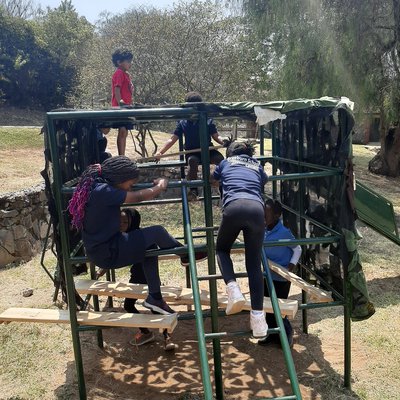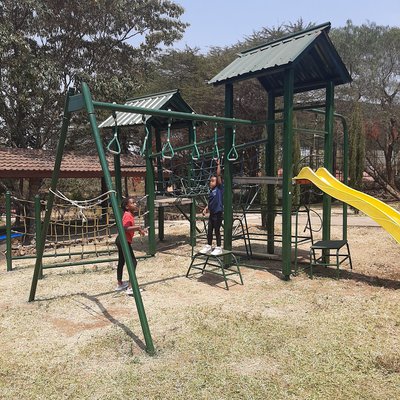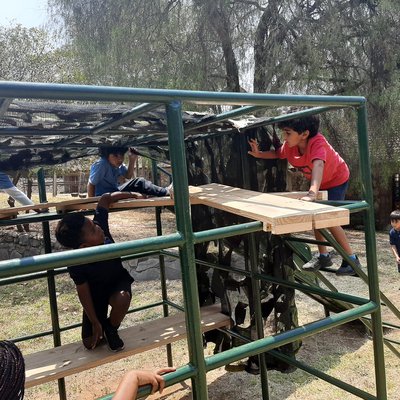Risky Play and Why It Matters

21st September 2021
“Only those who will risk going too far can possibly find out how far it is possible to go.”
- T.S. Eliot
Children are natural risk-takers. From the moment they are born they are learning and growing and taking risks as they learn to roll, crawl, stand and walk. Every new step in their learning and development comes as a result of taking risks.
Risky play is an important and essential part of a child’s learning and development. By teaching children how to manage risk rather than avoid it, they will become better problem solvers, communicators, are better able to calculate risks, build their gross and fine motor skills, develop their self-awareness and build autonomy and independence.
Our children in Primary have been taking some amazing strides in their development as problem-solvers, communicators and independent learners while playing with our deconstructed playground area. The children are given various 'loose parts' including a large net, various planks of wood of differing lengths, as well as the regular structures of our climbing frames and slides. Presented with endless, open-ended opportunities, they have been exploring, creating, working as teams, solving problems and also having an absolutely wonderful time!



From an adult point of view, risky elements are likely to strike a little bit of fear into us. How do we keep children safe but also find the balance of allowing this risky play and the amazing learning and development that come with it?
Here are some top tips for keeping Risky Play safe:
Set ground rules with the children: Talk about the risks with the children. Instead of ‘Don’t touch this!’ or ‘Don’t jump off!’, explain the risks and support them in deciding on ground rules for whatever they are doing.
Focus on ‘as safe as necessary’ over ‘as safe as possible’: The world is full of risks and children need to learn to recognise and respond to them in order to protect themselves and to develop their own risk-assessment capabilities. You can only learn to fall by falling but doing so in a safe space is preferable to a place where major injury can occur.
Be there beside them but don’t problem-solve for them: There is a delicate balance between holding a child’s hand the entire way, and being there to catch them if they fall. Stay nearby and encourage them as they try new things. Ask them what they are doing and watch them as they try. Let them struggle a little as they try to work out what to do – they are learning to problem solve.
Trust and encourage: We all know that children learn best when they are taking the lead and initiating their own play. Children instinctively know when they are ready to try something new or push their boundaries a little further. What they need is for their adults to trust them and encourage their ideas and abilities. Empower your children to try new things and celebrate them when they do!
Children are highly motivated to play in risky ways, but they are also very good at knowing their own capacities and avoiding risks they are not ready to take, either physically or emotionally. Our children know far better than we do what they are ready for.
- Peter Gray Ph.D
Article by Ms Logan with credit to www.rewildingearlyyears.com






